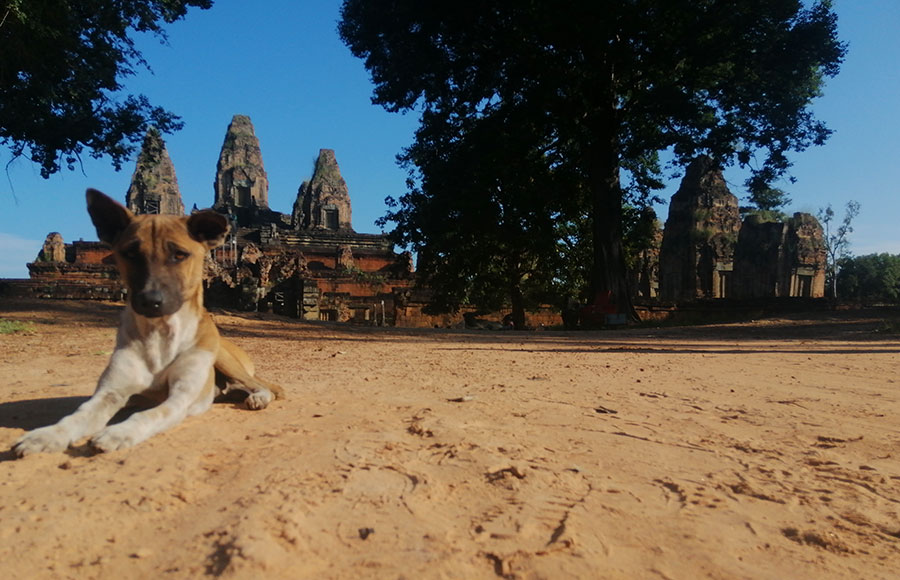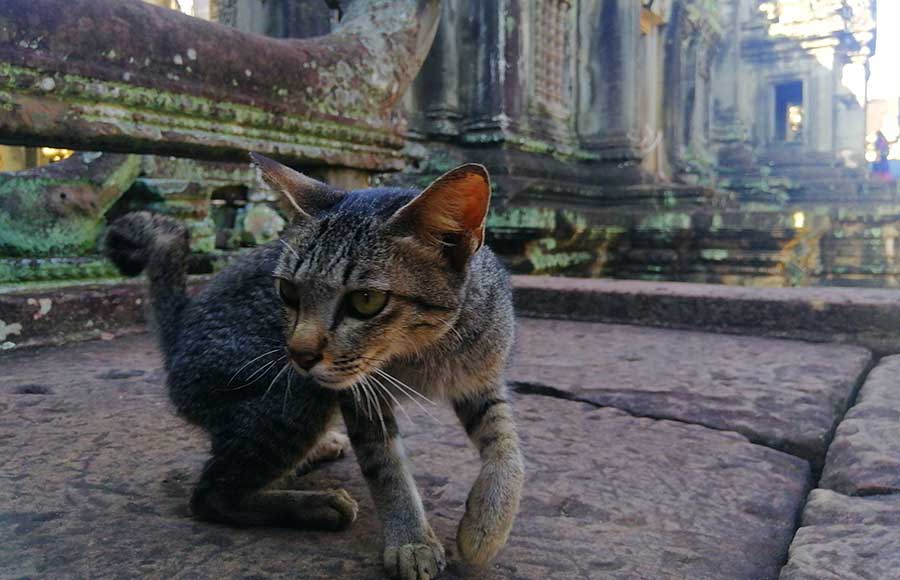Destinations
How to go from Bangkok to Siem Reap (Cambodia)
How to go from Bangkok to Siem Reap
When I visited Thailand, I found myself stacked at the city Bangkok as well, thinking about visiting the nearby country, Cambodia. Let’s find out how to go from Bangkok to Siem Reap (Cambodia) for an amazing weekend! One night I was researching where to go the next day, and I came one fantastic place I wish to tell you all about in this post-Siem Reap.
More so, tell you means to use and get to Siem Reap quickly and get to see the beauty Thailand as to offer in the northwest of Cambodia.
Siem Reap is regarded as the gateway to Anghkor’s impressive temples. It is about 400 kilometers (250 miles) from Bangkok. It is the location where the most outstanding UNESCO World Heritage Sites in the world are to be found.
Let’s start from Bangkok
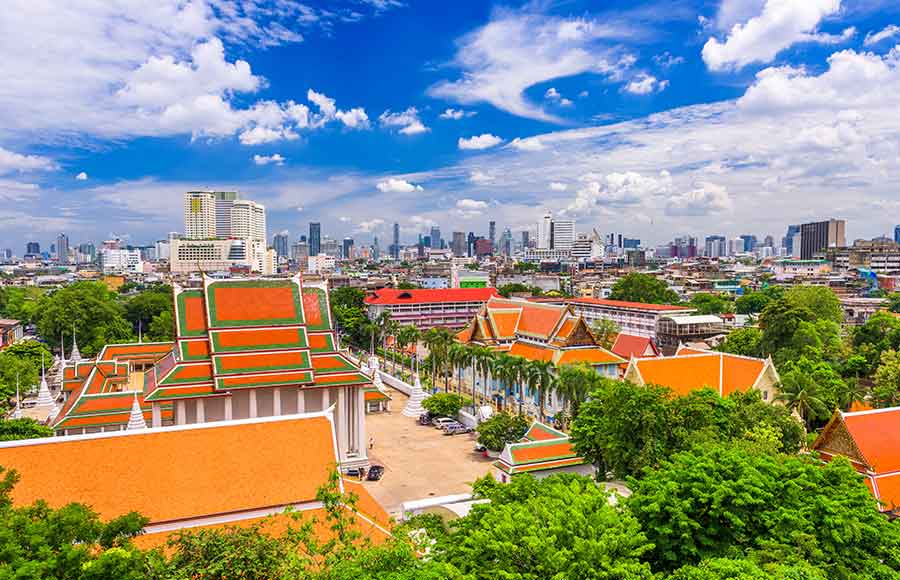
Siem Reap is the capital of northwestern Cambodia’s Siem Reap province.
It is a famous resort town as well as a gateway to Angkor.
In the Old French Quarter as well as around the Old Market, Siem Reap has colonial and Chinese-style architecture.
There are museums in the city, traditional Apsara dance performances, a Cambodian cultural village, shops for souvenirs and crafts, silk farms, countryside rice paddies, fishing villages, and a bird sanctuary near Tonle Sap Lake, and a vibrant dining scene, and cosmopolitan drinking.
Siem Reap today, being a popular tourist destination, has many tourism-related hotels, resorts, restaurants, and businesses. This due to its proximity to the temples of Angkor, Cambodia’s most popular tourist attraction.
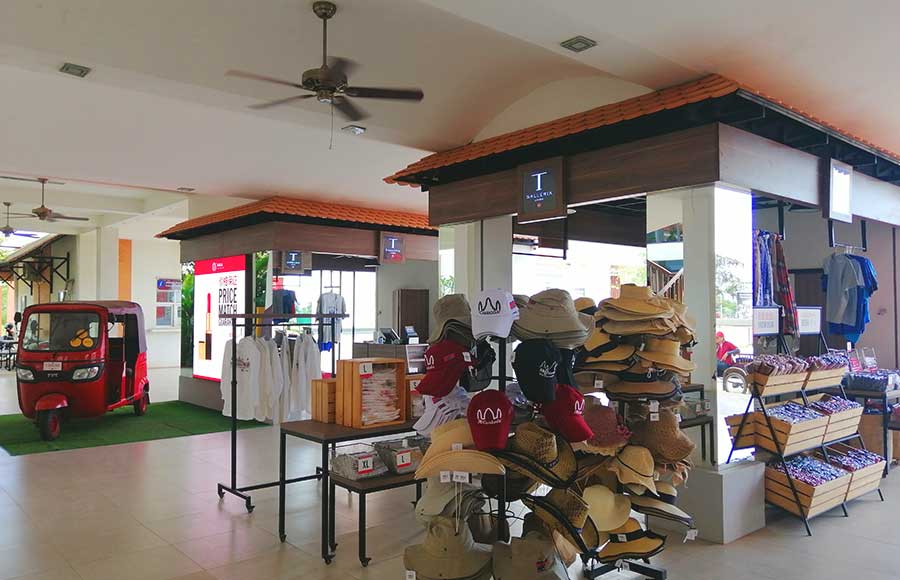
How to go from Bangkok to Siem Reap?
There are three primary reliable means to use from Bangkok to use and enter Siem Reap. Fly, use the bus or use the train and bus.
Bangkok to Siem Reap by flight
As you might imagine, traveling from Bangkok to Siem Reap by flight is the fastest way to get to Angkor, but it’s also the most expensive.
There was only one airline serving this route for some time, Bangkok Airways, and they charged a very high fare because they were the only choice, especially considering that the flight is only one hour in duration.
Fortunately, for now, there are a few other options as a result of which an airfare with Bangkok Airways has dropped in price, but bear in mind that this is still the most expensive airline to use.
Bangkok Airways and two other carriers, Thai Airways (operated by Thai Smile) and Cambodia Angkor Air, fly from the more modern Bangkok Suvarnabhumi Airport.
From Bangkok Suvarnabhumi Airport you can choose to fly with:
Bangkok (BKK) – Siem Reap (REP) route
Another option is to fly from Bangkok Don Mueang Airport to Thai AirAsia.
Bangkok (DMK) – Siem Reap (REP) route
When planning for flights, you should first understand which airport they are flying from and also look at things such as luggage allowances as they may differ. This can quickly increase the price of your airfare if you have to pay for extra baggage, so be sure to consider this.
Thai AirAsia will generally offer the most affordable flights from Bangkok to Siem Reap, but as always, the better the deal you can get the earlier you book.
While flying is the most expensive option, it is by far the fastest, and some say the easiest way to get to Siem Reap.
Once you’ve made your way to the airport, the flight takes only an hour, and you can pay for a Cambodia tourist visa once you arrive, going through immigration.
There are several choices for commuting to the city outside the airport. If you’ve already arranged your accommodation, you’ll usually have the option to pick up your room, mostly free of charge.
Taxis can be prepaid, and you know that by using the prepaid booths outside the airport, you won’t be ripped off by a greedy driver.
Bangkok to Siem Reap by Bus
Several unscrupulous tour companies are going to convey you out of much more money than they should, offering to get you your visa, etc. for an inflated cost.
Bus trips can also be quite long, stopping at places along the way multiple times, and encouraging you to spend more money.
Fortunately, there is now a far more frequent bus service from Bangkok to Siem Reap, so taking the bus is a perfect choice at a much lower cost than an air ticket.
A direct bus service operates with two-morning departures each day from the Mo Chit Northern bus terminal in Bangkok.
The bus will take you to Siem Reap for a very reasonable price, but remember that you cross an international border, so read on to find out how all this works.
On the above-mentioned direct bus, you will be taken to the Aranyaprathet border. The helpful staff will ask you what you need to do, not just drop you there and expect you to find your way.
It involves getting off the bus (leaving your luggage there but be sure to take your valuables, passport, etc. with you), walking a short distance to the Cambodian border, and purchasing your visa for entry. You will officially be in Cambodia, in the town of Poipet, once you have secured your visa.
You’ll be waiting for the same bus you’ve taken to the border, with your luggage still on, and it’ll go straight to Siem Reap.
As buses go, this is not the cheapest option, but this direct bus is an excellent choice for convenience and little trouble.
If you still hope to save more time, look at some of the other buses that are available for the ride from Bangkok to Siem Reap.
The problem with these buses is that they’re only going as far as Aranyapraphet bus station, staying on the border side of Thailand.
This means you’re going to have to make your way from the bus station to the border (about 5 minutes by tuk-tuk), then go through the border (this shouldn’t be hard to admit) Next you’ll have to get from Poipet to Siem Reap.
The newly paved road makes it a little less difficult than it used to be! Taxis are going to cost between $30 and $50US somewhere and will take about 90 minutes, while a bus is much cheaper and faster.
With Transport Co La
- 09:00 from Morchit, Bangkok
18:00 to Siem Reap - 07:30 from Morchit, Bangkok
15:00 to Siem Reap
With Giant Ibis Transport
- 08:45 from 12Go Makkasan Station, Bangkok
16:45 to Siem Reap Giant Ibis Main stations - 07:45 from Bangkok Giant Ibis
16:15 to Siem Reap Giant Ibis Main station
Bangkok to Siem Reap by train and bus
The final option is inexpensive, but it’s slower than any other option. It’s cheap to take a train from Bangkok to the border with Cambodia, and if you have time to spare (it takes about 6 hours), it’s an enjoyable and scenic way to travel.
You will still need to get under your own steam from the border to Siem Reap after crossing the border with this route, so weigh the pros and cons as to which method would work better for you according to your time and budget.
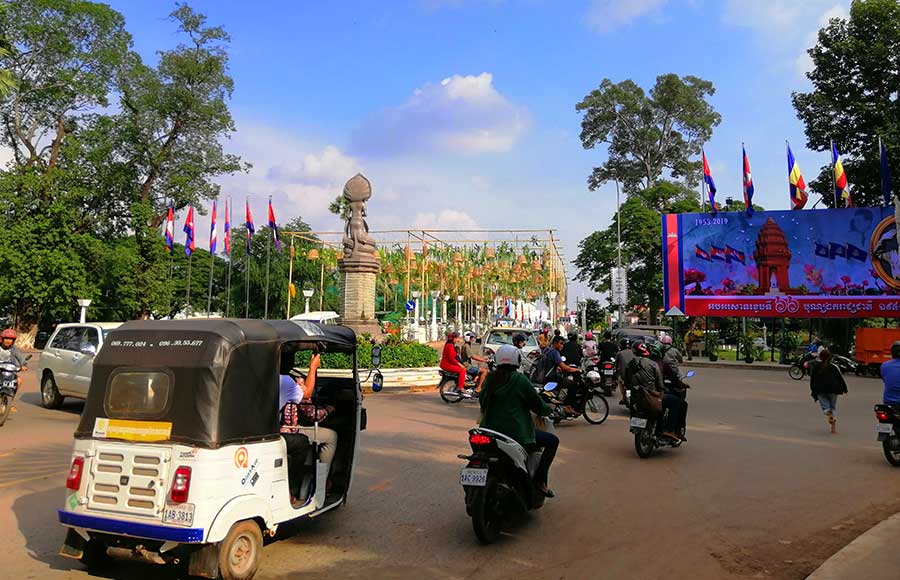
Top 5 attractions in Siem Reap
Siem Reap flourishes. This city is the number one tourist destination in Cambodia thanks to the Angkorian era’s great temples sitting right on its doorstep.
Everyone who sets foot here to see Angkor Wat. Still, the growing popularity of the city with travelers has led to the opening up of a whole host of other attractions as well as other activities, providing some downtime from temple-hopping.
Siem Reap itself is not the most beautiful city. Still, it has a lively café and restaurant scene that is starting to compete with Phnom Penh for cosmopolitan flair, and the city center is home to some of the best souvenir shopping.
You’ll find in the country with both great bargains market stalls and a host of special gift plush boutiques.
Angkor Wat (Angkor Archaeological Park)
The vibrant and ever-expanding tourism industry of Siem Reap is all about sitting next door to one of the most magnificent ancient sites around the world. The massive Angkorian city which stretches through Angkor Archeological Park (more commonly called by tourists after its main temple complex, Angkor Wat).
It was founded by a succession of kings between the 9th and 15th centuries, includes hundreds of temples and is so large that even after multiple visits, you’ll still think that you’ve just scratched the surface.
It was the largest city in the world during the medieval age, although only the temples remain today. It has stunning bas-reliefs carved with scenes from traditional Hindu epics, Angkor Wat itself is the main temple complex within site.
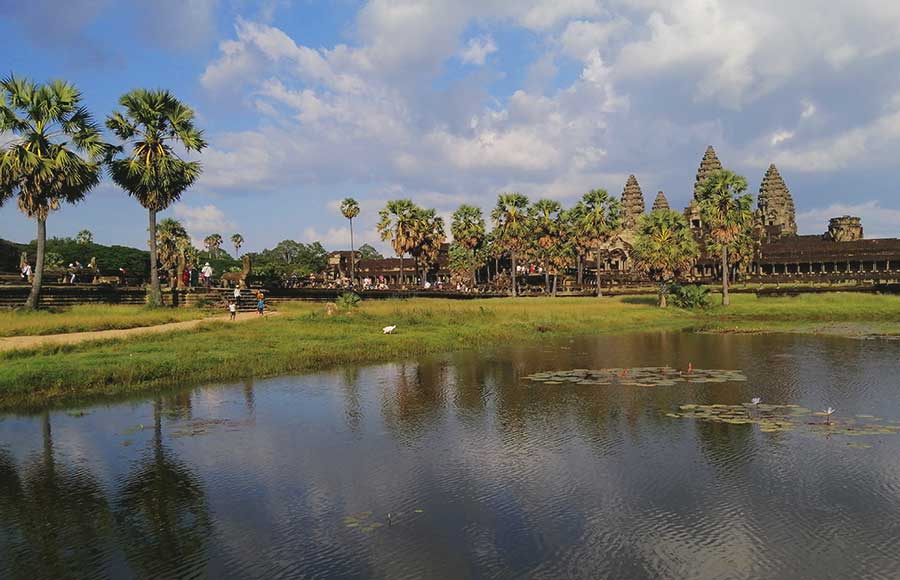
Following Angkor Wat, travel to the 10-square-kilometer Angkor Thom complex, where you will find one of the site’s most photogenic temples.
The Bayon Temple is famous for its 216 stone faces of Avalokiteśvara carved into the 54 towers of the temple, built by King Jayavarman VII, but don’t miss the intricate bas-reliefs running around the temple walls depicting life here in the city and various scenes of battle.
If you only have one day to hit the temples, the next destination on your tick list should be Ta Prohm. It is one of the most photogenic sights here because of its half-tumbled buildings intertwined with tree roots.
They’re also a number of other temples to see with more than a day to discover the legacy of the Angkorian kings.
The best way to organize your temple time is to hire a tuk-tuk driver to whizz you in and out of town for a couple of days and break the temple gazing in between for a day or two. If you have three days at your fingertips, make sure you don’t miss Preah Khan for his colossal columns and make time for Banteay Srei’s further-flung temple.
Angkor National Museum
An excellent accompaniment to a trip to Angkor Wat, this modern museum does an excellent job of explaining and unpicking the past of Angkorian times with audio-visual displays, excellent information boards and a well-established collection of Khmer artifacts from the temples of the site, along with items from other archeological sites in Cambodia.
Visiting here is one of the best ways to get your head around the different eras of the Angkorian period as well as the succession of kings who tried to outbid each other on their temple building schemes. In general, there are 1,000 images of the Buddha over the ages in the entrance gallery.
Gallery A describes how the Khmer Empire was created, and Gallery C is dedicated to the story of the four kings of the Angkorian period-Jayavarman II, Yasovarman I, Suryavarman II, and Jayavarman VII.
Address: Charles de Gaulle Boulevard
Check www.angkornationalmuseum.com their official website
Phare Ponleu Selpak. Cambodia’s beloved circus
Phare Ponleu Selpak is a dazzling show featuring acrobatics, music, dance, circus slapstick, and a number of other performing arts, and it’s also for a good cause. This is a modern circus, similar in style to the famous Cirque du Soleil in Canada, with a web of stories.
All Phare performers are graduates of Battambang’s Phare Ponleu Selpak Performing Arts College, which trains disadvantaged youth in a variety of arts.
This vivid and energetic spectacle incorporates more conventional circus skills with a distinctly modern twist that includes elements of traditional Khmer ethnic dance and music as well.
It’s a special night out that enchants adults as well as children. Nightly performances take place under a big-top.
Landmine Museum
Cambodia appears to be terrified by the long years of war during the late 20th century with the terrible toll of landmines.
Around five million landmines are still being hidden in the countryside left by Khmer Rouge forces, Vietnamese forces, and the government of Cambodia. With an average of 15 people injured by landmines per month, Cambodians are still paying the price today.
The Landmine Museum, located 25 kilometers north of Siem Reap, is doing an excellent and highly informative job of highlighting Cambodia’s ongoing landmines scourge and the work being done to de-min the country.
It was founded by local man Aki Ra, who played a major role in demining efforts.
Check www.cambodialandminemuseum.org their official website
Banteay Srey Butterfly Centre and Banteay Srey village
This is the largest butterfly enclosure in Southeast Asia, home to thousands of exotic butterfly species flying freely around a massive, enclosed tropical garden full of lush foliage and a range of tropical flowers.
A visit here offers an interesting natural diversion from all temple-hopping, especially for families in tow with young budding botanists.
You can also see the whole life cycle of a butterfly from the pupae stage.
You will Simply be admiring the spectacular kaleidoscope of colors from the number of different butterflies in the garden.
The center is very close to the Cambodia Landmine Museum, about 25 kilometers north of Siem Reap, and combining the two for a morning or afternoon trip is a good idea if you suffer from temple fatigue.
Check www.angkorbutterfly.com their official website
See also
How to get from Krabi to Phuket
Weekend in Khao Sok National Park
How to go from Khao Lak to Koh Samui?
Krabi to Koh Samui. How is it best to go from Krabi to Koh Samui?
Going from Chiang Mai to Sukhothai – an easy and quick guide
From Bangkok to Sukhothai to visit the famous historical sites

